
- Computer Graphics - Home
- Computer Graphics Basics
- Computer Graphics Applications
- Graphics APIs and Pipelines
- Computer Graphics Maths
- Sets and Mapping
- Solving Quadratic Equations
- Computer Graphics Trigonometry
- Computer Graphics Vectors
- Linear Interpolation
- Computer Graphics Devices
- Cathode Ray Tube
- Raster Scan Display
- Random Scan Device
- Phosphorescence Color CRT
- Flat Panel Displays
- 3D Viewing Devices
- Images Pixels and Geometry
- Color Models
- Line Generation
- Line Generation Algorithm
- DDA Algorithm
- Bresenham's Line Generation Algorithm
- Mid-point Line Generation Algorithm
- Circle Generation
- Circle Generation Algorithm
- Bresenham's Circle Generation Algorithm
- Mid-point Circle Generation Algorithm
- Ellipse Generation Algorithm
- Polygon Filling
- Polygon Filling Algorithm
- Scan Line Algorithm
- Flood Filling Algorithm
- Boundary Fill Algorithm
- 4 and 8 Connected Polygon
- Inside Outside Test
- 2D Transformation
- 2D Transformation
- Transformation Between Coordinate System
- Affine Transformation
- Raster Methods Transformation
- 2D Viewing
- Viewing Pipeline and Reference Frame
- Window Viewport Coordinate Transformation
- Viewing & Clipping
- Point Clipping Algorithm
- Cohen-Sutherland Line Clipping
- Cyrus-Beck Line Clipping Algorithm
- Polygon Clipping Sutherland–Hodgman Algorithm
- Text Clipping
- Clipping Techniques
- Bitmap Graphics
- 3D Viewing Transformation
- 3D Computer Graphics
- Parallel Projection
- Orthographic Projection
- Oblique Projection
- Perspective Projection
- 3D Transformation
- Rotation with Quaternions
- Modelling and Coordinate Systems
- Back-face Culling
- Lighting in 3D Graphics
- Shadowing in 3D Graphics
- 3D Object Representation
- Represnting Polygons
- Computer Graphics Surfaces
- Visible Surface Detection
- 3D Objects Representation
- Computer Graphics Curves
- Computer Graphics Curves
- Types of Curves
- Bezier Curves and Surfaces
- B-Spline Curves and Surfaces
- Data Structures For Graphics
- Triangle Meshes
- Scene Graphs
- Spatial Data Structure
- Binary Space Partitioning
- Tiling Multidimensional Arrays
- Color Theory
- Colorimetry
- Chromatic Adaptation
- Color Appearance
- Antialiasing
- Ray Tracing
- Ray Tracing Algorithm
- Perspective Ray Tracing
- Computing Viewing Rays
- Ray-Object Intersection
- Shading in Ray Tracing
- Transparency and Refraction
- Constructive Solid Geometry
- Texture Mapping
- Texture Values
- Texture Coordinate Function
- Antialiasing Texture Lookups
- Procedural 3D Textures
- Reflection Models
- Real-World Materials
- Implementing Reflection Models
- Specular Reflection Models
- Smooth-Layered Model
- Rough-Layered Model
- Surface Shading
- Diffuse Shading
- Phong Shading
- Artistic Shading
- Computer Animation
- Computer Animation
- Keyframe Animation
- Morphing Animation
- Motion Path Animation
- Deformation Animation
- Character Animation
- Physics-Based Animation
- Procedural Animation Techniques
- Computer Graphics Fractals
Real-World Materials for Reflection Models in Computer Graphics
Reflection, Shading, Lighting, and Shadowing play vital role in 3D graphics to show objects in a proper way. Reflection models help in describing how light reflects and refracts when it hits various materials like metals, glass, or even paper. To understand this, we use a concept called the Bidirectional Reflectance Distribution Function (BRDF).
In this chapter, we will see how reflection models work with real-world materials and provide examples to help clarify their applications in graphics. We will also cover smooth dielectrics, metals, rough surfaces, diffuse and translucent materials, and layered materials.
Understanding Reflection Models
In 3D graphics, the reflective properties of a surface are usually defined using the BRDF. It tells us how light reflects at different angles. The BRDF models used in computer graphics to mimic the behavior of real-world materials.
Some materials are smooth, and some have complex microscopic structures that influence how light behaves on their surfaces. The challenge is to select or design a BRDF model that best represents these materials for rendering purposes.
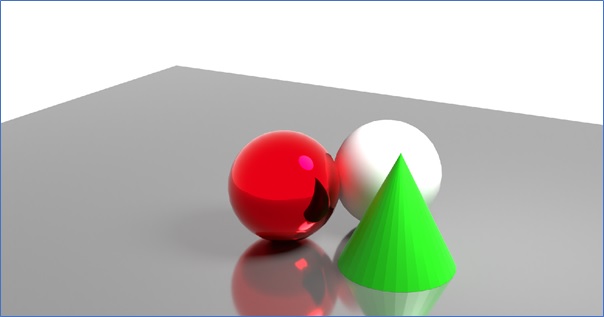
The BRDF formula is complex but can be approximated using empirical models. For surfaces that are not purely smooth. The details of the surface texture and microstructure can affect the appearance significantly. Hence, understanding these materials and how they react to light is important for creating realistic graphics.
Real-World Materials Categories
Let us see some of the real-world materials that can be grouped into several categories based on their interaction with light. The main types of materials include smooth dielectrics and metals, rough surfaces, diffuse materials, translucent materials, and layered materials. Each type has distinct characteristics that need to be considered in a reflection model.
Smooth Dielectrics and Metals
For smooth dielectrics, like glass or water, they refract light. Their reflective properties depend on the angle of incidence and wavelength of the light. A key property of dielectrics is that they do not absorb much light, meaning most of the light is either reflected or transmitted through the material.
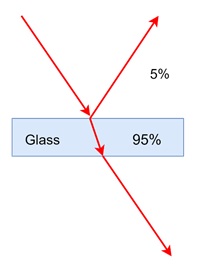
This can be demonstrated using the Fresnel equations, which describe how light behaves at different incident angles. We have seen this before. The Fresnel effect shows that the reflectance increases as the angle of incidence increases, especially near grazing angles.
If incident light is lying on more angle it will be reflected much.
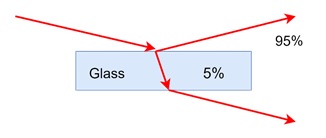
Metals, on the other hand, absorb light more readily. When light hits a metal surface, only a small portion is reflected or refracted. Thin metal sheets can be somewhat transparent, but for thicker sheets, most of the light is absorbed. The reflectance of metals can also be described using the Fresnel equations. See the following copper ball. One of them is much smoother than the other.
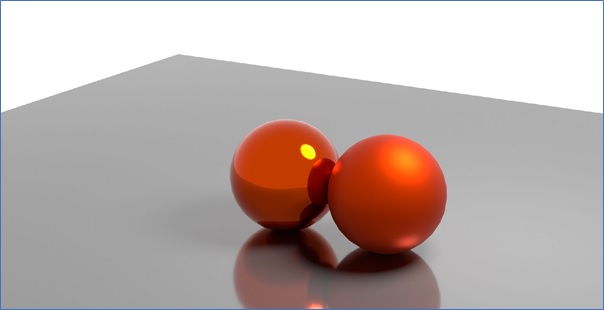
Rough Surfaces
When dielectrics or metals have a rough surface, the reflection properties change. These surfaces are often represented using microfacet models. A rough surface scatters light in many directions, causing the reflected light to appear spread out.
An example is brushed steel or scratched glass. At a close distance, the surface may still behave specularly, but from a distance, it appears more diffuse. Such rough surfaces can make materials look less shiny and more matte.
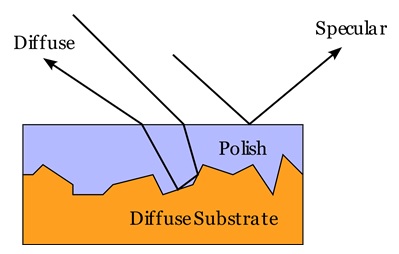
Diffuse Materials
Diffuse materials do not have shiny reflections. These materials, such as paper or unfinished wood, scatter light uniformly. The simplest way to model diffuse reflection is by using a Lambertian BRDF, which assumes that light is scattered evenly in all directions. However, even diffuse materials can have some specular properties at grazing angles, adding subtle reflections that enhance realism.
Translucent Materials
Translucent materials, like leaves or thin paper, reflect and transmit light diffusely. They do not transmit clear images but allow some light to pass through with a hue shift. For instance, red paper looks red because it absorbs all wavelengths except red, which is reflected and transmitted.
Translucent materials often show hue shifts in the transmitted light, which means the transmitted light has a different color than the reflected light. Such properties must be accounted for in their BRDF models to replicate their appearance accurately. Let us see one glass material which is translucent.
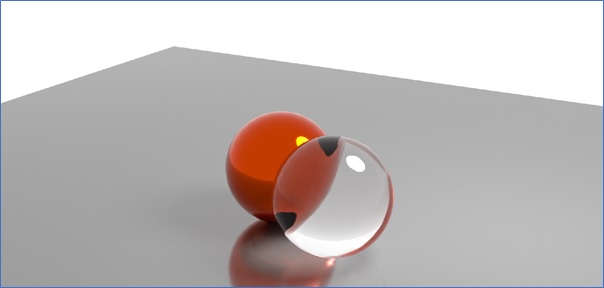
Layered Materials
The layered materials are surfaces with more than one layer of structure. A good example is a polished wood surface with a clear coat of varnish. The light interacts with the top layer (varnish) and the underlying substrate (wood). This will lead combined reflection and refraction behaviors.
The specular reflection is often governed by the Fresnel equations, while the transmitted light is scattered diffusely by the substrate.
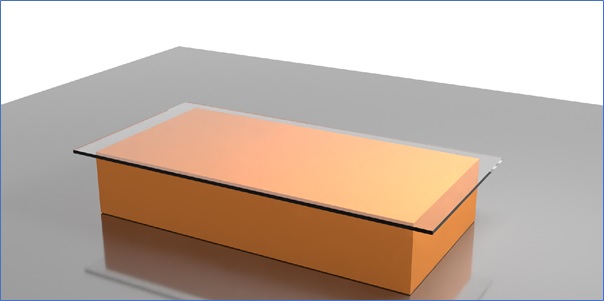
Layered materials often have both specular and diffuse components. For example, light may reflect off the top layer, then get transmitted through it and scattered by the diffuse substrate, and finally reflect back up to the surface. This creates a complex interaction between the layers that needs to be modeled correctly to achieve realistic results.
Examples of Real-World Materials in Reflection Models
To illustrate how these models are used in computer graphics, let us look at a few practical examples:
- Glass − Glass is a smooth dielectric that both reflects and refracts light. The amount of light reflected depends on the angle of incidence. At steep angles, more light is reflected due to the Fresnel effect. This behavior is important when simulating the appearance of windows or other glass objects.
- Brushed Metal − Brushed metal, such as steel, is a rough surface. It has microfacets that cause light to scatter in various directions, creating a soft, blurred reflection. This model helps render realistic metallic surfaces in architectural visualizations or automotive design.
- Paper − Paper is a diffuse material that reflects light uniformly. It can be modelled using a Lambertian BRDF, but slight specular reflections at grazing angles can add subtle realism.
- Polished Wood − Polished wood is an example of a layered material. The clear varnish on the surface reflects light specularly, while the underlying wood scatters light diffusely. This layered interaction is crucial for achieving photorealism in rendered images of wooden furniture.
Conclusion
In this chapter, we explained in detail about various real-world materials used in reflection models for computer graphics. We discussed smooth dielectrics and metals, rough surfaces, diffuse and translucent materials, and layered materials. We also understood how each of these materials interacts with light and the models used to replicate their appearance.
In the next chapter, we will cover the implementation of these materials in computer graphics which is necessary to understand these concepts better.